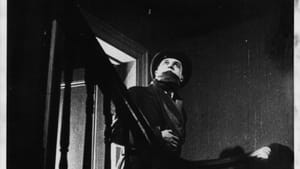Stay in the Loop
BSR publishes on a weekly schedule, with an email newsletter every Wednesday and Thursday morning. There’s no paywall, and subscribing is always free.
Old movie, new music
Relâche and 'The Lodger' at the Penn Museum

Sunday at the Penn Museum, the movie was silent and the music was live — an experience so old that it felt new.
The heyday of silents was about a century ago, so the Widener Lecture Room became a wayback machine for two afternoon screenings of The Lodger: A Story of the London Fog (1927), Alfred Hitchcock’s first smash. With Relâche, Philadelphia’s accomplished new music ensemble, performing a modern score created specifically for the film, the plot thickened and The Lodger unspooled. (Not really — it was digitized — but let’s pretend.)
Alternately thrilling, terrifying, and tickling the audience, modern filmmakers might envy the film’s reception, if not its primitive technology. Of course, The Lodger was made by the then-27-year-old Hitchcock.
Though the nicely restored film shows its age in googly-eyed acting and billboards between scenes, there are many hints of what was to come from the young Hitchcock. Even after his characters could talk, the director’s style relied heavily on visual cues — a menacing glance, a spiraling staircase, ordinary gestures that seem sinister, innocent events that portend…something wicked.
His tendency to put pretty blondes in jeopardy, for example, is central to The Lodger, in which a murderer preys on London’s young women while a family takes in a mysterious boarder. Hitchcock’s signature delight at frightening and misleading viewers is also in evidence. We are given clue after clue, led on by the ambiguous stranger and Joe, the slow-witted copper in love with Daisy, the family’s daughter. Meanwhile Daisy, who happens to be blonde, is attracted to the stranger. Naturally, The Lodger ends with a twist, Hitchcock winking at us across the years.
Mood music
The live soundtrack enhances the viewing exponentially, giving the 98-minute film immediacy and intensifying the impact of Hitchcock’s visuals. Composed in 1999 by Joby Talbot, the music was arranged for Relâche by Darin Kelly. Strings, wind, and keyboard formed the melodic backdrop, led by oboe and clarinet, while the percussion percolated, from drums telegraphing unseen violence, to staccato taps stretching nerves, to chimes ringing out warning, to supplying sound effects, such as a flicked light switch.
Relâche’s eight musicians were positioned off to the side in a tight circle and worked without a conductor. They never looked at the screen. They didn’t need to, explained percussionist Chris Hanning. A click track, fed through earphones worn by every player, enabled the musicians to synchronize the score with the film, which had frequent and rapid changes of scene.
Though the score is modern, it evokes the 1920s and neatly supports Hitchcock’s manipulation of mood and emotion. To settle the audience into the period, Relâche performed an overture, Raymond Scott‘s Twilight in Turkey, a lighthearted piece that brought the Marx Brothers to mind. (The 1937 piece existed only in recorded form, so arranger Kelly first had to transcribe Twilight in Turkey before he could fit it to Relâche.)
As for the Lodger score, Hitchcock would have approved: it’s taut with tension. Even when there is a pause or a relaxed section, listeners remain on guard. Relâche performed with gusto, and the musicians provided fascinating viewing whenever the onscreen action lagged.
For Pam's review of another film in the Penn Museum series, Ernst Lubitsch's Eyes of the Mummy, click here.
What, When, Where
Relâche in Residence: New Sounds and Cinema: The Lodger. June 1 at Penn Museum, 3260 South Street, Philadelphia. 215-898-4000 or http://www.penn.museum/.
The program was part of the University of Pennsylvania’s 2013-2014 Year of Sound celebration. Based in Philadelphia, Relâche (www.relache.org) has commissioned and performed new music for 35 years, and has collaborated across disciplines, combining its playing with film and dance. Relâche’s other film projects include improvising a score for Buster Keaton’s The General and scores for classic French films. The group’s sound combines classical, pop, jazz, rock, electronic, and world styles, and has been presented at more than 600 concerts in the Philadelphia area, as well as in South America, Japan, and Europe. Its most recent album is Comix Trips.
Sign up for our newsletter
All of the week's new articles, all in one place. Sign up for the free weekly BSR newsletters, and don't miss a conversation.
